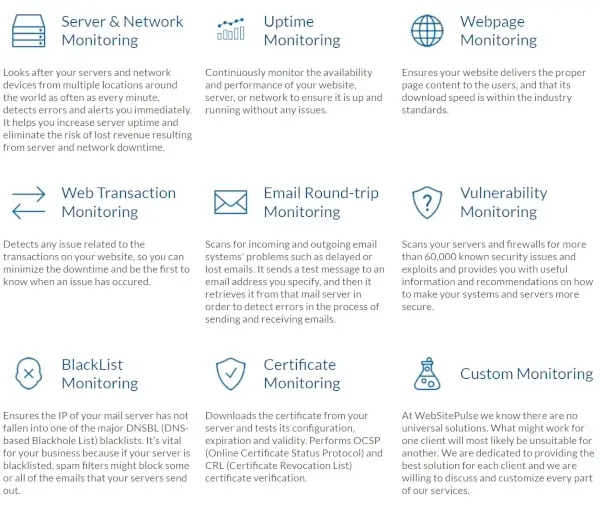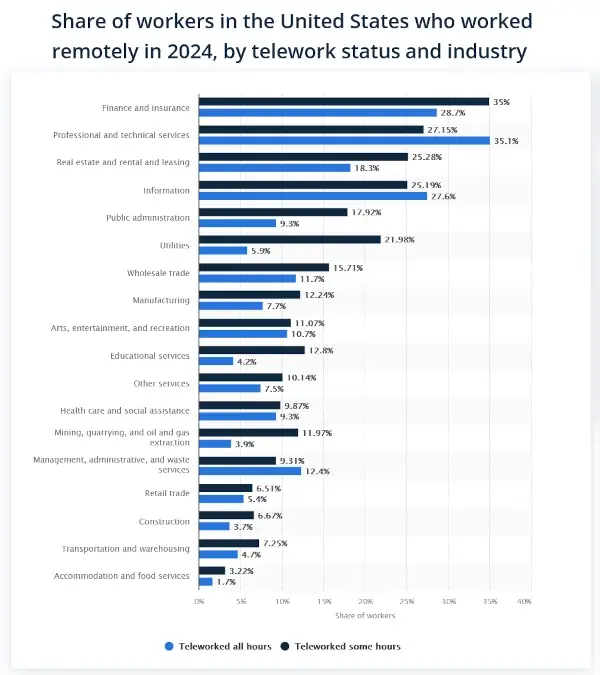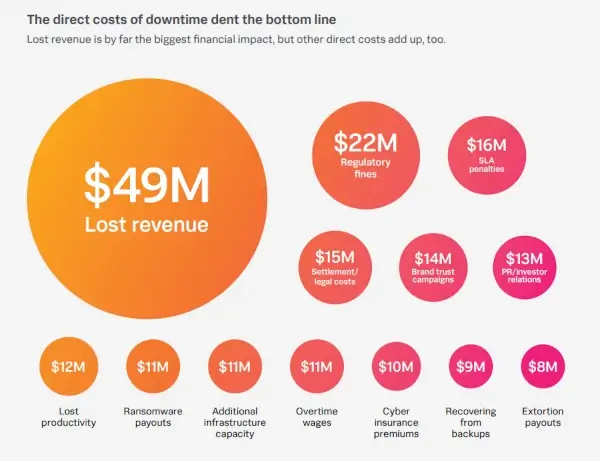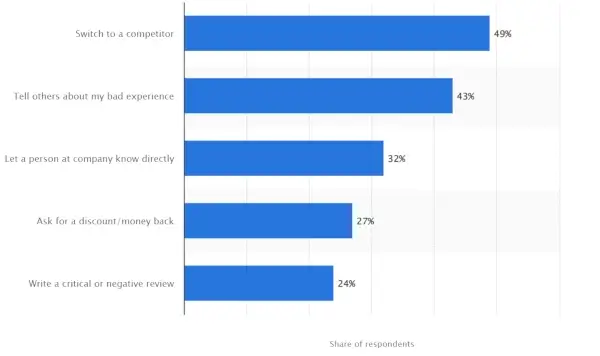
We increasingly depend on ethernets, servers, wireless routers, and other network infrastructures. People are attached at the hip to glowing, rectangular screens in their pockets. We use these devices for entertainment, shopping, directions, communication, and getting the new. More importantly, for businesses, we log online to get work done.
Table of Contents:
What is Network Monitoring?
Types of Network Monitoring
Why is Network Monitoring Important?
What are the Hidden Costs of Failed Network Monitoring?
- Increased Network Downtime
- Security Breaches and Data Compromises
- Lack of Visibility and Traceability
- Slow Resolutions
- Inefficient Use of Resources
- Damage to Brand Reputation
Use Network Monitoring Tools
Don't Suffer from Failed Network Monitoring
Pew Research estimated that 14% of the US workforce worked from home all the time in 2023. Many industries rely on functioning networks to provide customers with application services.
Where do these providers' computing resources come from? You guessed it, the network.
With so much connected to a complex web of technology, what are you doing to ensure it's running smoothly?
This guide explains the hidden costs of failed network monitoring and how to avoid them.
What is Network Monitoring?

Network monitoring is the process of tracking the performance, availability, security, and status of network devices and infrastructures. Network devices include servers, routers, switches, firewalls, and sensors.
IT experts use automated scripts and network monitoring tools to monitor system health. They look for potential bottlenecks or failures and gain insight into network performance.
Types of Network Monitoring
Network monitoring is a comprehensive concept. Network architecture and hardware constantly evolve, so staying on top of everything can be difficult. It's easier to handle when you break such a massive project down into smaller components.

Here are some (but not all) of the various network monitoring types:
- Performance monitoring: tracking the speed and accuracy of data transfers, looking for bottlenecks and slow performance. Typical metrics tracked include packet loss, latency, and response times. Any network-based applications and linked devices are also monitored for speed and reliability.
- Fault monitoring: detects and diagnoses errors, bugs, and faults in service levels and network devices.
- Availability monitoring: checks whether network devices, services, and resources are available. It tracks network uptime and downtime by sending out pings to determine each network component's status.
- Uptime monitoring: continuously tracks the availability of websites and servers for prioritized monitoring.
- Security monitoring: monitors website traffic for patterns, unusual behavior, and unauthorized users. Security tools alert you to threats and intrusions.
- Vulnerability monitoring: a more specific type of security monitoring. It focuses on your servers and firewalls, spotting potential issues and exploits for these devices.
- Application performance monitoring (APM): ensures network applications provide a satisfactory user experience. This could be when your team is using a call center integration tool. In many cases, APM is focused on customer satisfaction when using your website or applications.
- Cloud monitoring: track the performance and availability of cloud environments and virtual machines (VMS).
Why is Network Monitoring Important?
You consistently rely on network access. Your team is at the whims of server uptime, traffic bandwidth, TCP/ IP packet delivery, and other network elements.
Our reliance on network technology has increased post-pandemic. Modern employees often work when out of the office, either occasionally, part-time, or full-time. Statista reports teleworking to be around 35% in the financial and technical industries.

Your customers expect consistent service, from website shopping to web-based applications.
Here are some of the benefits of network monitoring:
- Streamline issue identification: an end-to-end process quickly locates the layer, level, or device of a problem.
- Manage high-volume data: network activity generates Jupiter-sized amounts of data from traffic, devices, bandwidth utilization, and other areas.
- Optimize resources: track usage and allocate network resources in more efficient ways.
- Establish baselines: what's "normal" for your network changes over time. Continuously gathering information fuels historical data that helps you maintain shifting baselines.
- Reduce downtime: spot potential issues earlier and solve them before they take your network down.
What are the Hidden Costs of Failed Network Monitoring?

Network failures can happen at any time. You're constantly upgrading and updating your infrastructure, adding new applications and business tools. Service providers and vendors make their own changes.
With so many variables, outages aren't even beyond the behemoths of the tech industry. Even if you don't have the resources of a big company, you are prone to the same consequences.
Increased Network Downtime
It's probably not so hidden, but the most pressing issue with failed network monitoring is when the system goes down. People lose access to applications and data. Your business can operate as normal, but customers and clients are greeted with error messages and crashing apps.

That's just the tip of the iceberg. Once the network is down, every second counts. Each passing minute adds to thousands or tens of thousands of dollars in lost revenue. A recent report found that downtime costs Global 2000 companies $49 million in lost revenue annually.
Downtime doesn't just cost you money; it leads to operational delays. Business applications and software integrations won't work properly. Even something as simple as pulling up a contract or an accounting spreadsheet can prove impossible when the network.
Work delays frustrate the team, cause disengagement, and lower employee morale. In addition, you have to factor in additional overhead costs such as overtime and any fees to bring in specialist IT services.
Security Breaches and Data Compromises

The network shutting down might sound like your complete nightmare. There are scenarios equally as bad or worse, however. What about system vulnerabilities? Poor network monitoring also leaves you exposed to potential vulnerabilities.
You handle your customer's personal and sensitive data daily. Malicious hackers are happy to find ways into your network. When they're successful, you'll pay for it.
The total costs will be a combination of compliance penalties and lawsuits. IBM reports that the average cost of a data breach is $4.88 million. In addition, you will need to spend resources to fix security threats and vulnerabilities after the breach.
Personal and company data isn't the only thing at risk. Network intruders are just as happy to break things and take your network offline.
Failing to monitor your network leaves you and your customers helpless against online packs of wolves. Network monitoring is one of several security best practices you should be following.
Lack of Visibility and Traceability

Network monitoring is the best way to account for what's happening historically and in real-time. Without documentation, how can you know what happened before everything went wrong? A lack of visibility makes it unnecessarily difficult to troubleshoot and find root causes.
You could also violate compliance requirements. Failed monitoring results in poor traceability when handling sensitive data. This could result in penalty fees or, worse, during an audit.
Slow Resolutions

Low network visibility creates blind spots in your network activity. The most glaring is a lack of real-time monitoring. Managing traffic bottlenecks, unusual data transfers, and server performance all require live tracking.
As mentioned, this causes a lag between discovering issues and finding a solution. Time is money. For instance, it's estimated that Meta lost $100 million from a gitch that took its apps offline for only two hours. Imagine if the network outage had lasted for days.
Inefficient Use of Resources

How can you optimize your network resources if you don't know how they're being used? Without historical and real-time data, you miss out on deeper network usage and performance insights.
You may not have enough bandwidth or computing resources during peak activity times — inefficiencies such as these hamper employee productivity. For example, if your tech stack doesn't have the bandwidth, you won't be able to get the most out of cutting-edge solutions such as conversational AI technology.
Your team gets less done in more time while waiting for apps and databases to respond. Customers bounce from your online store and abandon shopping carts while web pages hang, losing you revenue.
On the flip side, you may be paying for cloud computing services like AWS that are overkill for what you need. Without keeping your finger on the pulse, you won't know you're unnecessarily spending money on network infrastructure.
Damage to Brand Reputation
As soon as you have network problems, your customers have problems. Network downtime might be a minor annoyance or frustration. Worse issues like private information being leaked online have a bigger impact. Either way, you leave a sour taste in your clients' mouths.
Zendesk reports that 73% of customers will switch brands after multiple bad interactions. Even worse, more than half will leave your business after one negative experience.

A 2021 survey found 43% of consumers will tell others about a bad experience. Nearly 1 out of 4 respondents will write a critical or negative review online.
Use Network Monitoring Tools
Alright, so you're ready to avoid the pitfalls of lousy network monitoring. Where can you find a solution to your problems? Use monitoring services like WebSitePulse.
We offer a range of network tracking tools, such as:
- Server and network monitoring
- Uptime monitoring
- Webpage monitoring
- Web transaction monitoring
- Vulnerability monitoring
- Certificate monitoring
We can also work with you to set up custom network monitoring so you can keep tabs on what's most critical to your business.
Network monitoring services streamline the process of securing and maintaining your system. You don't need to rely on in-house IT experts. Instead, you and your team can focus on other areas, such as growth and revenue.
Don't Suffer from Failed Network Monitoring
Technology is a double-edged sword. It helps your company grow and innovate. It also increases complexities and risk. You can't afford to leave your network to fend for itself. Don't hinder your company by letting your infrastructure become an obstacle for you and your customers.
Be proactive and nip problems in the bud before they develop. Use network monitoring services and tools to set up seamless monitoring and stay alert to any issues now and in the future.


 Copyright 2000-2025, WebSitePulse. All rights reserved.
Copyright 2000-2025, WebSitePulse. All rights reserved.